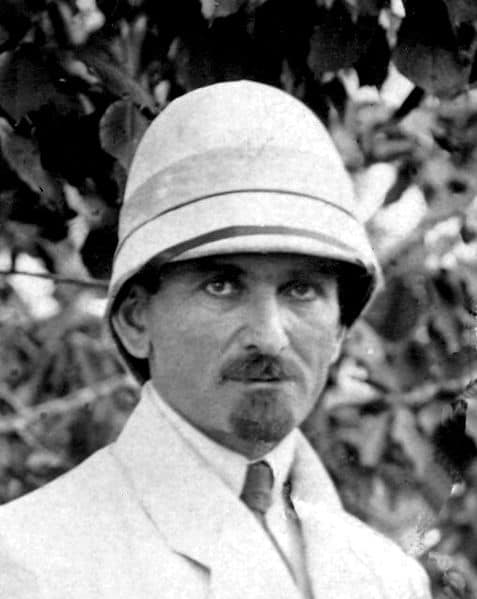Ashkharbek Kalantar was an important player in the founding of archeology in Armenia, but, as many intellectuals of his time, his life ended tragically during the Stalinist purges.
Kalantar was born on February 11, 1884, in the village of Ardvi, in Lori (Armenia), into the Armenian noble families of Loris-Melik and Arghutian. After graduation from the Nersisian School of Tiflis (1903) and the Russian gymnasium of the city (1907) he entered the University of St. Petersburg in 1907 to study linguistics and the languages of the Caucasus. As a student, Kalantar participated in the archeological excavations of Nikolai Marr in Ani. He finished his studies in 1911 and became a fellow of the Institute of Archeology of St. Petersburg. He participated in numerous archeological missions in Armenia.
In 1914 he was elected fellow of the Imperial Society of Archeology, designated curator of the Asiatic Museum of St. Petersburg, and took the direction of the thirteenth campaign of excavations in Ani. He participated in World War I as translator and advisor to General Antranig in the first battalion of Armenian volunteers, with the rank of deputy colonel, and on his way he studied the Armenian historical monuments in the region of Khoy (Iran).
In 1917 he participated in the second archeological expedition of Van, together with Armenologist Nicolas Adontz. During the Ottoman invasion of Eastern Armenia in April-May 1918, he organized the evacuation of about 6,000 objects of the museum of Ani, which are currently located at the Museum of History of Armenia, in Yerevan. In 1918-1919 he was lecturer at the Transcaucasian University of Tiflis and became one of the seven founding members of the new University of Yerevan in 1919. He was soon named scientific secretary of the Commission of Ancient Monuments, which he cofounded with architect Alexander Tamanian and painter Martiros Sarian.
Kalantar was the last archaeologist to describe monuments, mostly in the region of Ani, which were destroyed by the policies of the Turkish government after the 1920s. In 2013 an international expedition repeated Kalantar’s expedition of August–September 1920 to document the current, often desperate situation of ten or more monuments of the Ani region (Alaman, Arjo-Arij, Bagaran, Khtskonk, Mren, et cetera).
In 1922 he founded the chair of Oriental History and Archaeology at Yerevan State University. In the same year, he published the first textbook of archaeology in Armenian. He continued his archeological investigations, organized exhibitions, and participated in international congresses. He organized over thirty archeological expeditions. In the 1930s he acted with Tamanian to try to save the basilica church of Poghos-Petros in Yerevan (in the place of the current Moskva movie theater), which was razed by the Soviet regime. In 1935 Kalantar was appointed member of the scientific council of the Armenian branch of the Soviet Academy of Sciences (the predecessor to the National Academy of Sciences of Armenia).
His distinguished career came to an end in March 1938, during the Stalinist purges. He was arrested as an “enemy of the people” together with other colleagues. He died in exile somewhere in Russia in June 1942.
Ashkharbek Kalantar authored more than 80 scholarly articles in his life. The English translations of his selected works were published in 3 volumes in Paris (1994, 1999, 2004). His bust was inaugurated in the entrance hall of Yerevan State University in February 2015.
